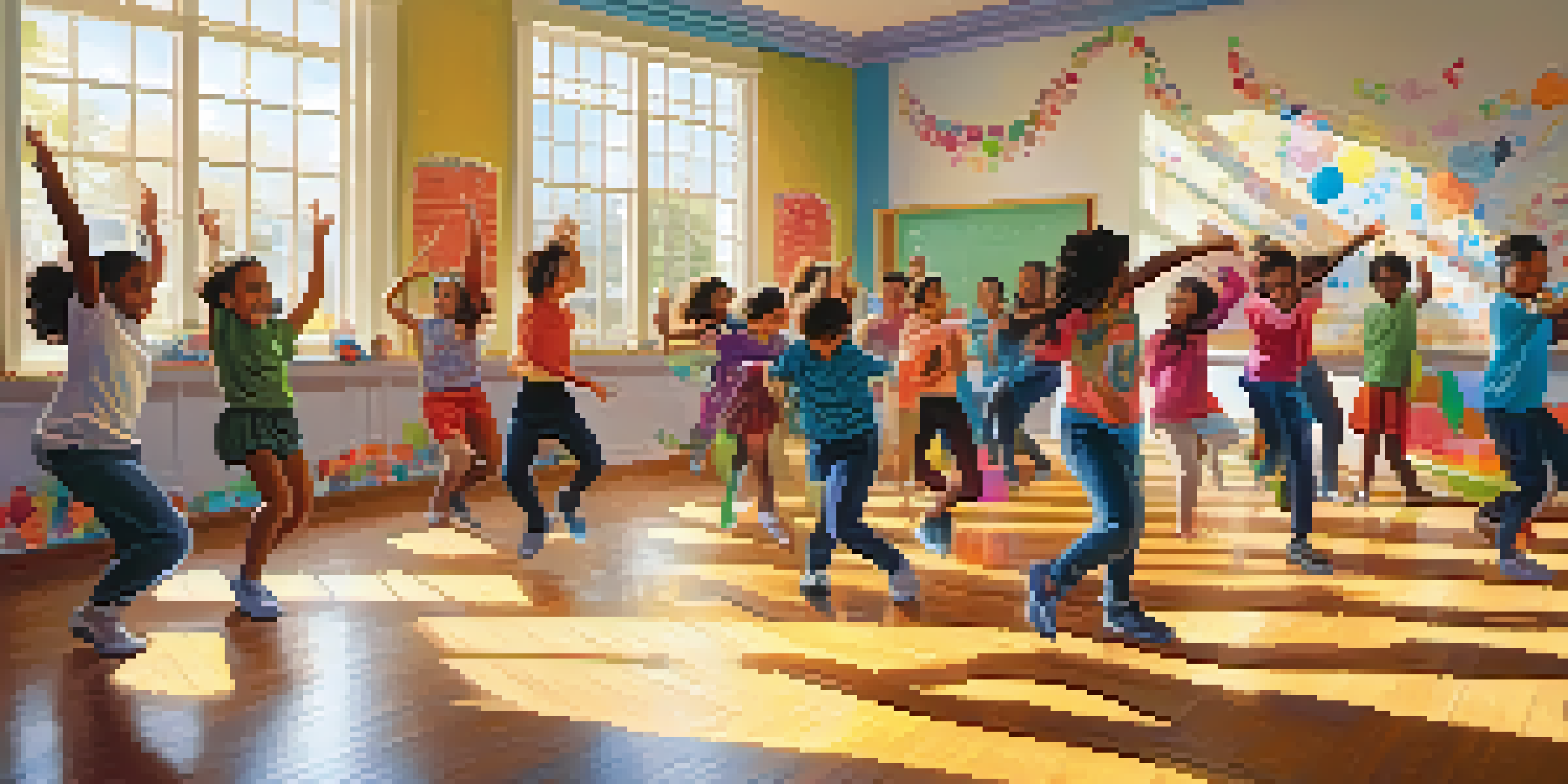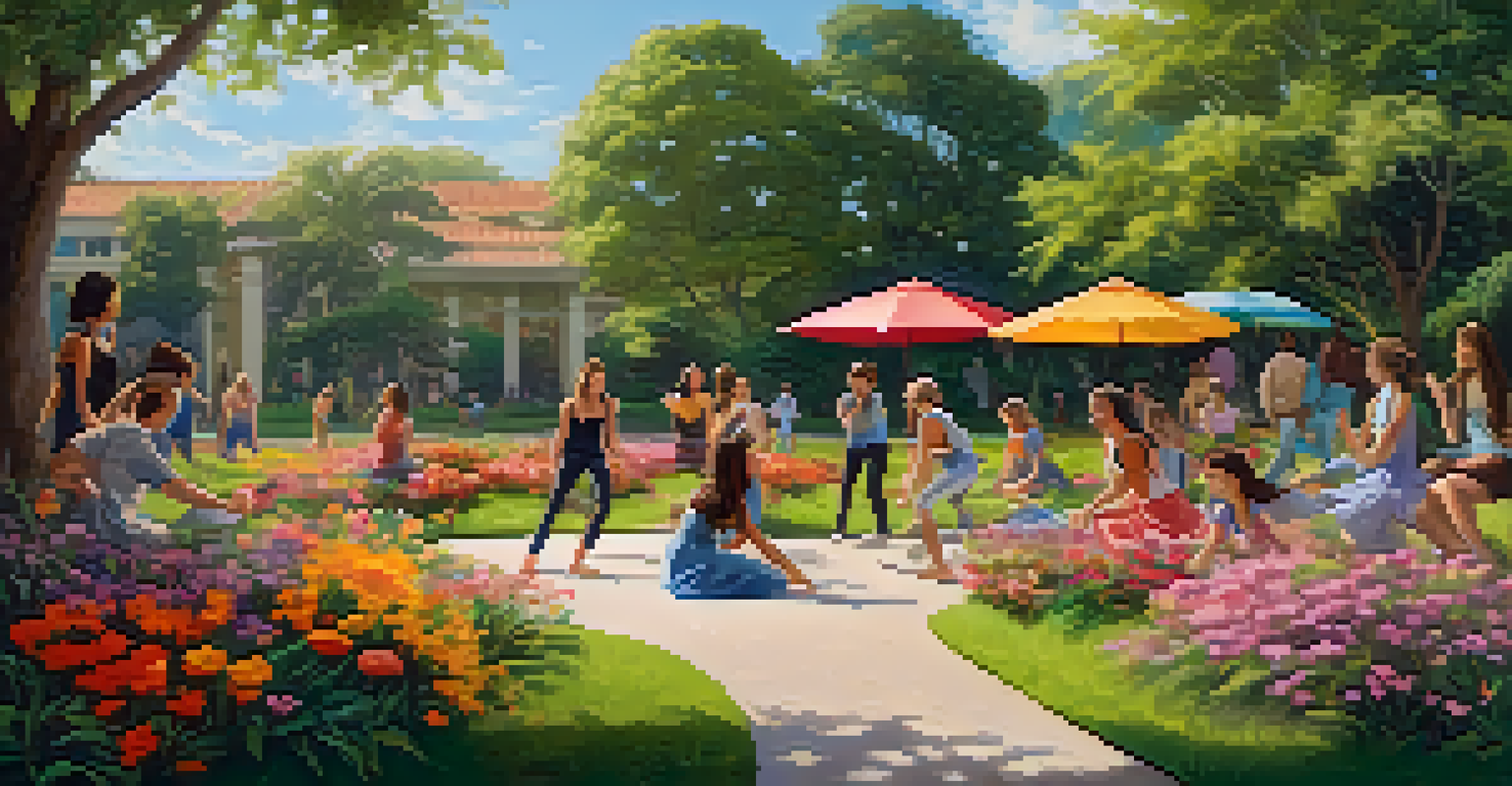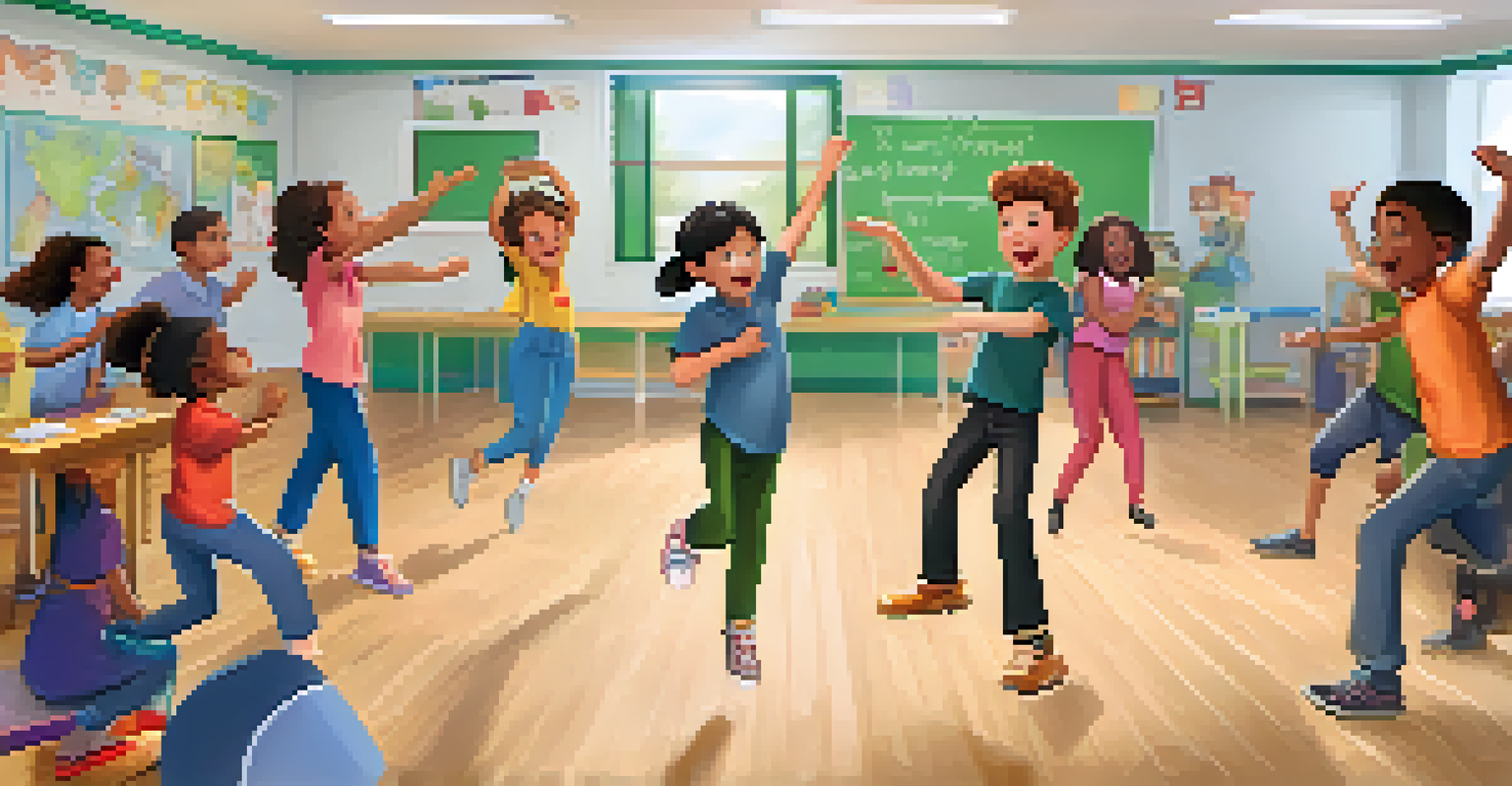Memory Techniques: Incorporating Dance into Learning Practices

Understanding the Connection Between Dance and Memory
Dance is not just an art form; it engages both the body and mind, creating a powerful connection that enhances memory. When we dance, we involve multiple senses, which helps in encoding information more effectively. This multi-sensory approach can make learning more enjoyable and memorable, as it taps into our natural instincts to move and express ourselves.
Dance is the hidden language of the soul.
For instance, think about how you can remember a song better when you move to its rhythm. The same principle applies to learning—by incorporating dance into educational practices, students can form stronger neural pathways. This means that the next time they need to recall information, the movements learned will trigger their memory, leading to better retention.
Furthermore, dance can serve as a tool for active learning. Rather than sitting passively, learners engage their bodies, making the experience dynamic and interactive. This shift not only helps with memory retention but also fosters a positive learning environment where creativity flourishes.
How Movement Boosts Cognitive Function
Engaging in physical movement, such as dance, has been linked to improved cognitive function. Studies show that movement increases blood flow to the brain, which can enhance clarity and focus. This is especially beneficial for learners who may struggle with traditional study methods, as dance offers an alternative way to absorb information.

Imagine a classroom where students dance to learn multiplication tables. This not only makes the process fun but also helps them recall the facts more easily. The rhythm and movement associated with the dance create a mental link that aids in memorization, demonstrating how physical activity can be a game-changer in education.
Dance Enhances Memory Retention
Incorporating dance into learning can create stronger neural pathways, making it easier to recall information.
Moreover, dance encourages emotional expression, which is crucial for cognitive processing. When learners feel emotionally invested in their activities, they are more likely to remember what they have learned. This emotional connection to learning through movement can lead to deeper understanding and longer-lasting retention of information.
Incorporating Dance Into Study Routines
Integrating dance into your study routine can be simpler than you think. Start by choosing a topic you want to learn about and create a simple dance or movement that represents key concepts. This could be anything from swaying to a specific beat to creating gestures for different ideas, making the learning process enjoyable and interactive.
Movement is a medicine for creating change in a person’s physical, emotional, and mental states.
For example, if you’re studying biology, you might create a dance that mimics the process of photosynthesis. Each movement can represent a different stage, turning abstract concepts into a physical activity that’s easier to remember. By actively engaging in this way, you’ll find that you recall the information more effortlessly during exams or discussions.
Additionally, consider forming study groups where students can share their own dance techniques for learning. This collaborative approach not only builds community but also encourages creativity, allowing learners to explore various ways to enhance their memory through movement.
Dance as a Tool for Stress Relief in Learning
Learning can sometimes be stressful, and stress can hinder memory retention. Incorporating dance into study sessions can act as a fantastic stress reliever, providing a break from traditional study methods. When students dance, they release endorphins, which help improve mood and reduce anxiety, creating a more conducive environment for learning.
Picture a group of students taking a break from their study materials to dance for a few minutes. This not only refreshes their minds but also helps them reset their focus. After dancing, they can return to their studies with renewed energy and clarity, making it easier to absorb information.
Movement Boosts Cognitive Function
Physical movement, like dance, increases blood flow to the brain, enhancing clarity and focus in learners.
Moreover, regular movement can foster resilience among learners. By understanding how to manage their stress through dance, students develop coping strategies that they can use in other areas of their lives. This holistic approach to learning cultivates not just academic success but also emotional well-being.
Examples of Dance-Based Learning Activities
There are numerous dance-based activities that educators can implement to enhance learning. One popular activity is 'dance charades,' where students act out vocabulary words or historical events through movement. This fun and interactive method encourages participation while reinforcing memory through physical representation.
Another example is creating a 'movement map' where students design a dance that follows a storyline or a sequence of events. By physically embodying the narrative, learners can gain a deeper understanding of the material, making it easier to recall key details when needed.
Finally, consider integrating dance into presentations. Students can incorporate movement to illustrate their points, making their presentations more engaging and memorable. This not only boosts their confidence but also ensures that the audience retains the information presented.
The Science Behind Dance and Learning
Research supports the idea that movement, including dance, enhances learning through various mechanisms. One notable study found that students who participated in dance activities showed improved memory recall compared to those who engaged in sedentary learning. This highlights the importance of physical activity in cognitive development, particularly in educational settings.
Additionally, dance encourages rhythm and timing, which are critical for memory retention. When students learn through rhythm, they create patterns in their minds that facilitate easier recall. This connection between rhythm and memory is why many educational songs are set to music, leveraging the power of movement.
Dance Reduces Learning Stress
Engaging in dance during study sessions helps relieve stress, improving mood and creating a better environment for learning.
Furthermore, dance stimulates the brain's areas associated with coordination and balance, which are essential for learning complex concepts. Engaging multiple areas of the brain simultaneously can lead to more robust learning outcomes, making dance an effective tool for educators and students alike.
Embracing Dance as a Lifelong Learning Tool
Incorporating dance into learning practices can have lasting benefits that extend beyond the classroom. Embracing movement as a fundamental part of learning encourages a lifelong love for education and personal growth. As individuals continue to explore dance throughout their lives, they can apply these techniques to various learning scenarios.
Imagine carrying the skills learned from dance into the workplace, where creativity and collaboration are essential. Dance can serve as a reminder of the importance of adaptability and thinking outside the box, leading to innovative problem-solving. This ability to merge physical movement with intellectual pursuits can set individuals apart in their personal and professional lives.

Ultimately, embracing dance as a tool for learning fosters a culture of creativity and engagement. By encouraging individuals to move, express, and connect with their learning, we pave the way for a future where education is not just about memorizing facts, but about experiencing and understanding the world in a richer, more meaningful way.